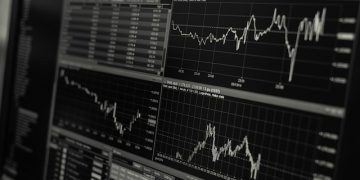Fund analysts have tipped value stocks’ recent revival to continue in 2021, backing sectors such as energy and financials to outperform growth equities like technology and consumer discretionary.
According to Citywire’s inaugural Professional Buyer Sentiment Survey, almost one quarter (23%) of respondents said energy would be the best-performing equity sector of 2021. This was followed by another value sector, financials, which was tipped for the top by 17% of respondents.
Healthcare won the same number of votes as financials, with industrials backed by 12% of respondents to be the year’s best-performing sector, the same percentage that tipped technology for the top spot.
The results suggest that gatekeepers expect value to continue the revival it has enjoyed since November, sparked by news of a number of successful Covid-19 vaccine trials.
In the three months to January 25, the Russell 1000 Value index was up 14%, while the Russell 1000 Growth was up 12%. Over 10 years to January 25, the growth index has returned an annualized return of 17.2% versus value’s 10.5%. For most of 2020, growth stocks, led by the technology sector, outperformed value as the world locked down and logged on.
Jeff DeMaso, director of research at Adviser Investments, said the rollout of vaccines for Covid-19 would make one ‘assume market winners would be different [in 2021].’
This has already been seen in the sector winners and losers since the end of October last year. Over the three months to January 25, energy is the best-performing sector, up 36%, with financials second at 19.3%, and technology third at 13.3%.
WTI is back above $50 a barrel, having begun 2020 at about $60, but crashed to -$37 on one bizarre day in late April.
Which S&P sector do you expect to perform best over the next year?
Enough energy?
Gene Goldman, CIO and director of research at Cetera, said value was due a comeback, having lagged growth for at least a decade, but asked if its revival was already well underway.
‘The question is, has it come back too much?’ he asked.
Goldman’s favorite sector for 2021 is financials, which he said was ‘very leveraged to an improving economy [and] very much the high beta value play.’
One fund he and his team recommend, in order to capture value’s return, is the $13.6bn Putnam Equity Income fund run by Darren Jaroch and Lauren DeMore. The fund posted an 8% annualized return for three years to the end of 2020, good enough to surpass the return of the Russell 1000 Value index by nearly two percentage points and beat 80% of its Large Value peer group.
Paul Courtney, founder and director of research at Springtide Partners, said he broadly agreed with the sector choices of respondents. While he backed an energy revival, he said that it might be better to play this by buying the underlying commodities rather than related equities.
‘The commodity will outperform the equities [because of] political and ESG limitations,’ he said.
Our survey also found that the majority of gatekeepers (69.5%) expect emerging markets to outperform developed international equities and US stocks over the next decade. Just under a quarter (22%) of respondents tipped the US to win again over the next 10 years, and just 8.5% backed developed international stocks to soar the most.
Goldman said he had reflected this forecast in his portfolios, where he was running a ‘bigger-than-benchmark position in emerging markets.’
In the near-term, he expected Asia to lead emerging market returns.
‘Asia should benefit because many countries there have done a good job mitigating the effects of the virus,’ he said.
What do you think the best-performing stocks over the next decade will be?
Land of the pricey
Courtney said emerging markets, especially the region’s value stocks, made sense, given where prices are today, but that he still preferred US stocks due to the market’s ongoing support from the Federal Reserve and current growth rate.
‘The Fed is far ahead of accumulating and monetizing debt [than other central banks],’ he said.
Courtney said he was impressed with new Treasury secretary and previous Fed chair Janet Yellen’s recent remarks in her Senate confirmation hearings, calling for ‘big’ action to help small business owners and working people.
The vast majority of respondents to the survey (71%) rated US stocks as expensive, with 18% rating them as very expensive. Just 10% said they were fairly priced, while no one said they were cheap.
Almost half (45%) of respondents expected the S&P 500 to return between 8% and 10% over 2021, with 11% predicting it would fall into negative territory. When asked what the index’s annualized return for the next decade would be, the most popular response (20%) was 7%. A combined 50% of respondents said between 6% and 8%. As many respondents said it would be 4% or less compared to those who said it would be 9% or more.
Rate expectations
Despite the promise of tight Fed policy, 58% of respondents predicted that the yield on the 10-year Treasury would be 2% at the end of 2021, double what it is now. The yield has already doubled compared with its August 2020 lows. Another 37% of respondents thought the note would end the year with a 1% yield, where it sits now.
Inflation expectations among respondents aligned with views on rates. Around 37% thought inflation would run at 2% for the next decade, and more than 30% thought inflation would be higher than that. Only around 3% of respondents thought the next decade would bring deflation.
Courtney said he did not expect rates to rise much, backing the Fed to cap them, but he was cautious of taking on too much duration risk.
‘We’ve exited intermediate and long-term bonds, and we’re staying short duration,’ he said.
Goldman had also reduced duration versus the Bloomberg Barclays US Aggregate Bond index (Agg) in the expectation of some reflation.
‘We used to have some commodity exposure, but we’re playing [the reflation] expectation with lower duration. The Agg’s duration is around six [years], but we’re maybe at four,’ he said.
Goldman said the Fed’s support of bond markets meant he was confident in owning credit, via the $22.7bn PGIM High Yield fund.
‘We have a high yield position. Spreads are narrow, but we embrace the fact that the Fed is buying debt,’ he said.
DeMaso said he was in the camp that believes rates will rise. He said it was hard to forecast these movements, however, and so his bond positions were made up of core and core-plus funds, with some ability to tilt duration on the margin.




